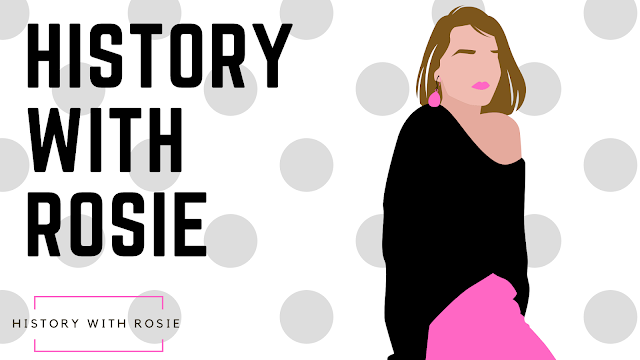The festive season is upon us- so I thought I'd make a mini advent calendar to share a piece of Christmas related content for the next 24 days!
The first door of The History of Rosie advent calendar is ... The History of advent.
We are all familiar with advent calendars (who doesn't love opening little doors to chocolate everyday!) but where does advent/the counting down to Christmas originate from?
Advent is latin for 'The coming' - the coming of Christmas or as some Christians have perceived it, the second coming of Christ. It is uncertain when Advent started but it has probably been observed since the fourth century, but it is most likely to have become a true tradition when Christmas became a fixed date.
In the Early Middle ages Advent began on the feast of St Martins (11th November) and ended on Christmas day. Advent was similar to lent, Christians devoted themselves to fasting and praying to show dedication to God. It was a time for spiritual reflection and cheer, much like today. Although now the commercial side has taken over Christmas, advent still holds the same excitement as it did in the past.
Advent wreaths
By the early 16th Century Advent wreaths were becoming common practise for Christian households. It originated with the German Lutheran's, but the modern wreath we know today didn't take shape until the 19th century. The wreaths were made of evergreen to represent the hope of eternal life brought by Jesus Christ. The four candles lit every Sunday in advent, represent different Christian ideologies. The candle lit on week one represents hope, week two represents peace, joy represents the third week and week four is love. In the 16th century three of the candles were purple and one was rose, the rose one represented joy. The dye for these colours was so rare it was a colour associated with royalty. Sometimes a fifth white candle was added inside the wreath on Christmas day to represent Jesus. This practise is still done today, with the lighting of the candles being a big part of the Christian celebration of Advent.
Advent calendars
In the Nineteenth century German protestants marked walls with chalk to countdown to Christmas which is where advent calendars, similar to what we know are believed to come from. German protestants also burnt candles to count down to advent, you can purchase these candles today which allow you to burn down a certain amount each night until you burn the whole candle.
Advent calendars - like the type we have today originated in the late 1800's in Germany. With Gerhard Lang being credited to creating the first printed advent calendar in 1908, based around his mother attaching sweets to cardboard to open every morning in the advent period. Gerhard adapted this calendar to have 24 little doors to be opened from December 1st until the 24th, with each door containing a picture behind it. It was a roaring success and spread across Europe and North America. The pictures were normally depicted from the Hebrew bible. Most advent calendars don't have any religious content now - but you can still purchase picture advent calendars some of which are stunning!
What about chocolate?!
The chocolate advent calendar first appeared in 1958, with Cadbury officially launching their first chocolate calendar in 1971. Can I just say a big thank you to however thought of this idea! Since the introduction of the chocolate calendar we now have everything from gin calendars to lego calendars - amazing how times have progressed! Personally I would love a gin calendar ...
Did you know the history of advent?
What is your dream advent calendar or do you observe any family or religious traditions at Advent?
Comment below!
Rosie






0 comments